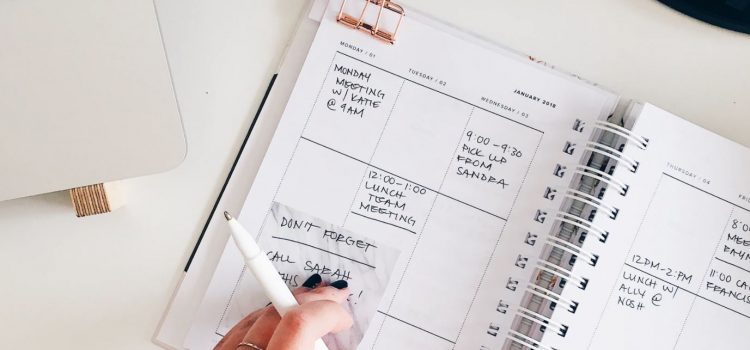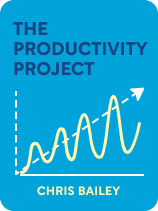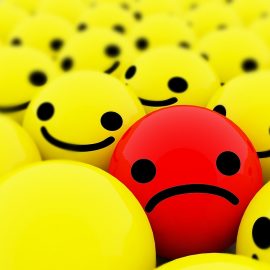

This article is an excerpt from the Shortform book guide to "The Productivity Project" by Chris Bailey. Shortform has the world's best summaries and analyses of books you should be reading.
Like this article? Sign up for a free trial here.
Do you struggle to manage your priorities? What are some criteria you can do to identify the most important tasks on your to-do list?
Managing priorities is the key to being meaningfully productive. When you’re able to identify and tackle the highest priority tasks first, you’ll progress a lot faster. However, it’s not always easy to identify what is most important from your to-do list.
Productivity expert Chris Bailey gives some tips on how to identify the most significant, highest-impact tasks.
Identify What’s Important
Bailey argues that making the most of your time requires that you first manage your priorities—identify your most significant tasks (which he calls “high-impact tasks”). Significant tasks are tasks that are important either because they’re meaningful to you or because they’ll have a big impact on your work. Economic research has shown that 80% of your results usually come from 20% of your effort, a theory known as the Pareto Principle, meaning that a few significant tasks are responsible for the majority of what you accomplish. So logically the more time you spend on your most significant tasks, the more productive you’ll be.
(Shortform note: It can be easy to confuse your most significant tasks with your most urgent tasks. In First Things First, Stephen Covey explains that the tasks we spend time on are determined by two factors—significance and pressure. A 2018 study found that people often choose to complete tasks with shorter deadlines over more significant tasks without pressing deadlines. Because significant tasks are often less likely to have hard deadlines, it’s important to schedule significant tasks into your day to make sure they don’t always get pushed to the back burner.)
The challenge is to identify what those significant tasks are. To discover your most significant tasks, Bailey suggests a strategy he adapted from Brian Tracy’s Eat That Frog:
- First, list all your professional responsibilities.
- Next, identify the task that brings the most value.
- Finally, identify the other two most important things on the list.
These three items are your most significant tasks.
| Managing Priorities: How to Prioritize Your To-Do List Tracy goes into more detail in Eat That Frog. He outlines the ABCDE model, a more comprehensive tool for identifying significant tasks and then prioritizing everything else on your to-do list. In the ABCDE Model, you use different letters to categorize all the items on your to-do list. A designates tasks that are very important. Not doing these tasks will have negative consequences on your work. B designates tasks that should be done, but aren’t critical.C designates tasks that would be good to do, but there won’t be any impact if you don’t do them. D designates tasks you can delegate.E designates tasks that you can eliminate entirely. After you label your to-do list, Tracy emphasizes the importance of always prioritizing your “A tasks” and working on those tasks until they’re complete. Only then should you move on to other tasks on your list. |
Bailey recommends planning your day using the “Rule of Three.” (Shortform note: Bailey uses the Rule of Three to refer to your three most significant tasks, but he didn’t coin the term. The Rule of Three is a principle applied across multiple fields that suggests that things presented in threes are inherently more satisfying, effective, and memorable to an audience than other numbers.)
Bailey’s Rule of Three is inspired by J.D. Meier’s recommendation in Getting Results the Agile Way. Like Meier, Bailey suggests that at the beginning of each day and the beginning of each week, you should write down three things you want to accomplish. These three things should be significant tasks that have a big impact on your work and life, but are also doable within the designated time period (day or a week). This will often require breaking down larger projects into smaller, more manageable tasks. Though figuring out the right-size task takes time, with practice you’ll be able to identify the significant tasks that are both manageable and time-appropriate.
(Shortform note: Other productivity experts argue that even three things are too many. In Make Time, tech industry experts Jake Knapp and John Zeratsky argue that to be most productive you should have just one central focus a day. They explain that your daily focus should be one task or project that takes 60-90 minutes to complete. They suggest choosing your daily focus based on what’s most pressing, what makes you proud, or what makes you happy.)
At the end of the week, Bailey recommends reviewing the week to reflect on your priorities. He suggests using “the weekly review,” a tool introduced by David Allen in Getting Things Done. In the weekly review, you look back on your tasks and accomplishments from the week to get a big-picture view of what’s going on in your life. The weekly review not only allows you to see what you’ve gotten done but also to plan what’s most important for the following week.
Bailey offers the following questions (adapted from Allen) to help you reflect on your week:
- What needs more of my time, energy, focus?
- What did I spend too much time on?
- What do I need to add to my to-do list?
- Are there any new opportunities?
- Are there any new challenges?
- Am I happy with where I’m going?
(Shortform note: In Getting Things Done, Allen elaborates on the weekly review, explaining that the overarching goals of the strategy are to capture and clarify what you have floating around in your head, to help you update your task list accordingly, and to prompt you to innovate and consider what else is possible.)
Finally, when you have a clear picture of your significant tasks, Bailey recommends spending less time on them instead of more. Working long hours, he explains, is rarely a sign of productivity, but often a sign that you’re not effectively managing your time, focus, and energy. During one productivity experiment, Bailey spent one week working 90 hours and another week working 20. He found that he was barely more productive in his 90-hour work week. When he knew he only had 20 hours to work, he was much more focused. If you give yourself less time on significant tasks, you’ll be more focused and energized with the time you have.
(Shortform note: Bailey recommends spending less time on significant tasks because it’ll make you more productive. In Deep Work, Cal Newport elaborates that you should limit the time you spend on significant tasks (what he calls “deep work”) because people are only capable of about four hours of deep work a day—even less if you’re a beginner. More than four hours, he argues, and you begin to lose focus.)

———End of Preview———
Like what you just read? Read the rest of the world's best book summary and analysis of Chris Bailey's "The Productivity Project" at Shortform.
Here's what you'll find in our full The Productivity Project summary:
- A how-to book for anyone who wants to become more productive
- Why productivity isn't about doing a lot, but doing what matters
- How to hone your focus and monotask better






